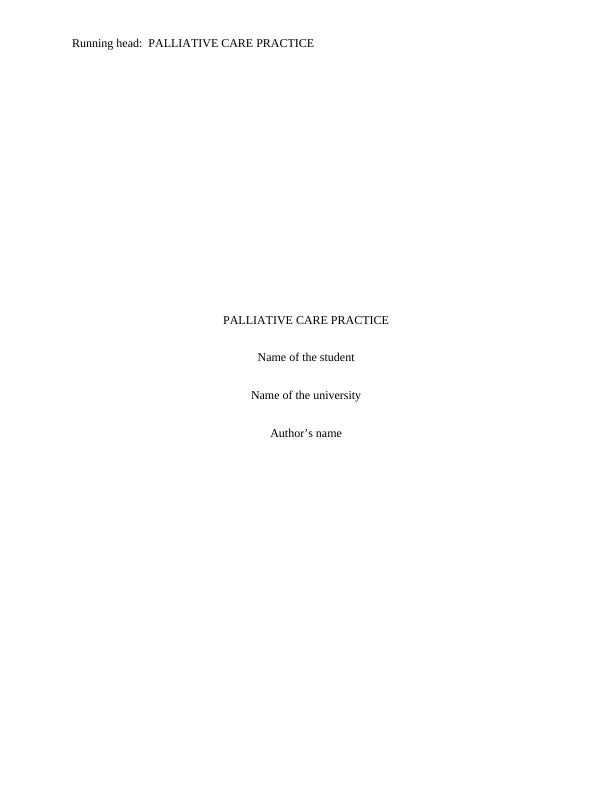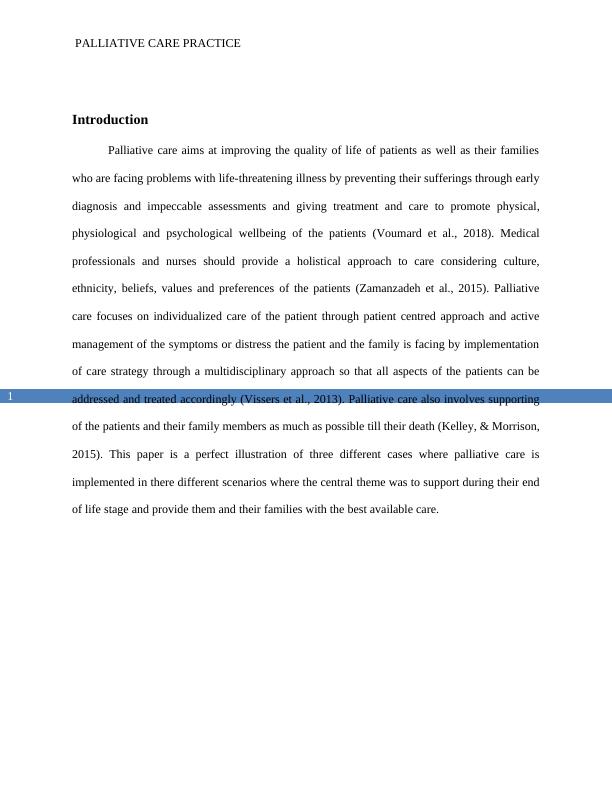Palliative Care Practice Case Study 2022
Analyzing and discussing the culture-centred care of people with life-limiting conditions through case studies.
8 Pages1793 Words19 Views
Added on 2022-10-04
Palliative Care Practice Case Study 2022
Analyzing and discussing the culture-centred care of people with life-limiting conditions through case studies.
Added on 2022-10-04
ShareRelated Documents
End of preview
Want to access all the pages? Upload your documents or become a member.
Palliative Care Practice: Improving Quality of Life for Patients and Families
|6
|1550
|250
Nursing Palliative Care for Patients - Importance of Multidisciplinary Team
|4
|799
|372
Physical Health and Mental Health Case Study 2022
|6
|1590
|46
Palliative Care for COPD and Depression
|8
|2128
|34
Nursing Reflective Activity | Report
|5
|889
|54
The comorbidities and complex symptoms
|7
|1838
|25



